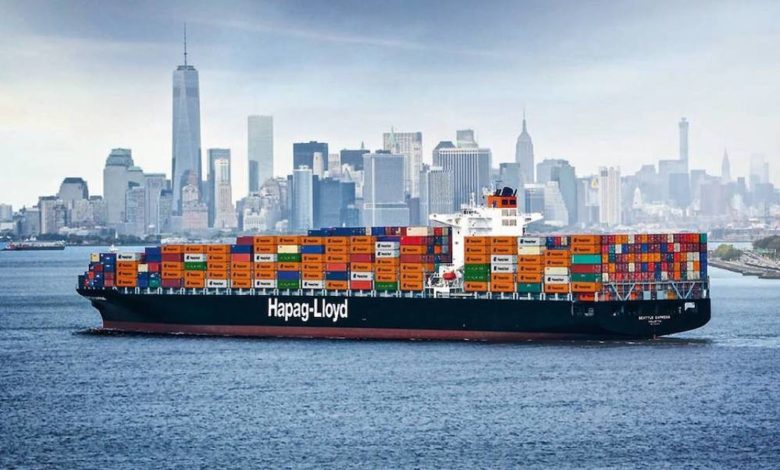Container FFAs come of age

After many false dawns, container forward freight agreements (FFAs) are gaining traction during the current liner chaos being experienced around the world.
Last week London-based Freight Investor Services (FIS) completed contracts on container FFAs for the month of March on the Asia to Mediterranean route at a level of $7,900 per feu, a rate based on the Freightos Baltic Exchange (FBX13) daily index, suggesting the current container bull run has legs.
We will see an increase in the use of these tools because they can help manage price volatility
Mark Jackson, chief executive of the Baltic Exchange, commented: “The concept of index-linked floating contracts and FFAs in the container market for freight forwarders, shippers and carriers is not new. But the ability to benchmark a contract against a robust, trustworthy index which comes under the umbrella of a UK regulated organisation is a potential game- changer for the container freight industry. The daily FBX Index provides the market with a credible and fully transparent reference point. It is based on the world’s largest global database of multimodal freight rates using real-time data from logistical providers and overseen by an institution whose information already underpins billions of dollars-worth of physical and forward freight contracts in the dry bulk, oil and gas transportation markets.”
FIS has noted a marked increase in inquiries for pricing and trading tools in the current volatile and uncertain market with counterparties still looking to hedge in future rates, even at these elevated levels.
Lars Jensen of SeaIntelligence Consulting noted : “It seems some market participants clearly expect high Asia-Europe rates to persist. That some companies have entered into FFAs at a level of $7,900 for all of March shows that some parties now firmly believe that the high rate levels are likely to persist at least for the next three weeks. We are about to see an increase in the use of these tools precisely because they can help manage the price volatility in the market.”
Rates on the FBX13 Asia to Med route have increased from $2,350 at the end of October 2020 to
$8,066 on March 12, nearly a 250% increase.
Javier Romeu, CEO of freight forwarder Tiba Group, said: “With volatility at all-time highs, we see an increasing demand by shippers to get fix long term contracts that carriers don’t always feel comfortable offering. As a freight forwarder, we see FFAs as the right tool to fill that gap.”
In a release from FIS Keith Gaskin of Seko Logistics explained why container FFAs had taken so long to gain traction.
“The main reason why derivatives didn’t take off when they first came up around 10 years ago was a lack of liquidity in the market, but that has changed and when you have liquidity you can spread your risk far better because you need liquidity to have pricing that is indicative of where it should be,” Gaskin said.
Peter Stallion, a container FFA broker with FIS, commented: “After more than a decade of indexation, container FFAs have come of age, offering a cost-effective and flexible means to manage container freight volatility.”
Another winner from the ongoing container crunch has been the New York Shipping Exchange (NYSE).
The exchange was launched in 2017 as a new way to contract ocean freight, where the shipments are guaranteed by the carrier and committed to by the shipper.
Gordon Downes, founder and CEO of NYSHEX, told Maritime CEO last month that the ongoing container bull run had led to “rapid” growth for his platform, both in terms of containers contracted through NYSHEX and in terms of new shippers making two-way committed contracts through the platform.
“What is most encouraging is that despite all the volatility in the container markets during 2020, the shippers and carriers who had NYSHEX contracts benefitted from 99% compliance,” Downes said, a remarkable figure when the average booking roll-over rate was 37% according to Ocean Insights.

The main reason why derivatives didn’t take off when they first came up around 10 years ago was………because BCOs and forwarders believed they were better off playing the market as day traders and there was no evidence to suggest that a futures gamble would yield any better results.
Now the feeling may be more about self-protection but I wonder if the futures market and the resultant freight rates will be a guarantee against short shipments and rollovers?
Hi Martyn,
The general attitude we’ve seen is for use of FFAs in combination with a roster of other contracting methods (including ‘two-way commitment’ contracts), which makes complete sense. This also means that counterparts can do what they must to secure capacity, whilst trading of the FFAs may allow for positions to be closed should a hedger be unable to secure physical capacity, or have zero consumption of container capacity.
A basic hedge may also involve customers paying spot price for physical capacity, putting the carrier in a better position to stick to contract commitments given the carrier is being paid an attractive rate.